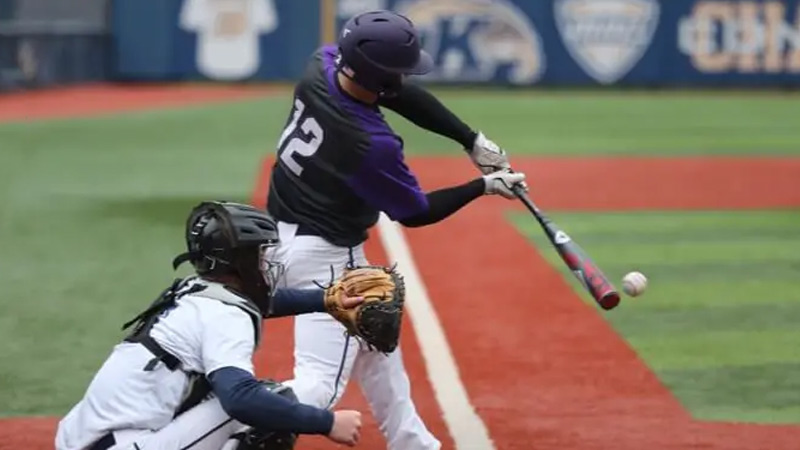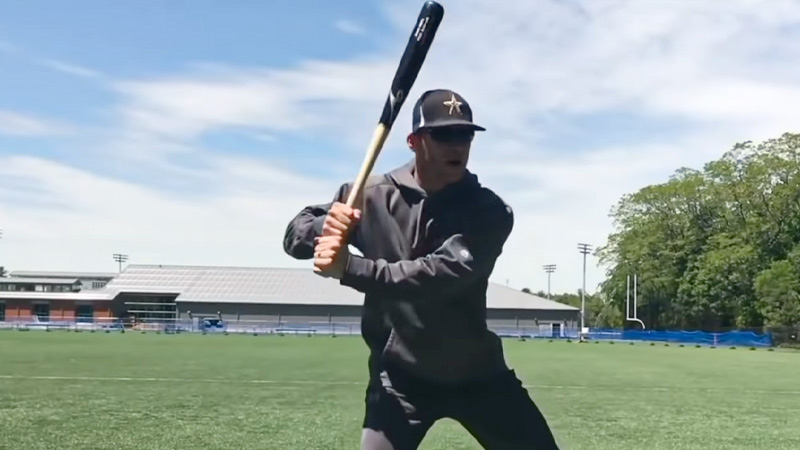In the realm of high school baseball, players often wonder what constitutes a good batting average for their level of competition. A batting average serves as a measure of a player’s ability to get hits when at bat, calculated by dividing the number of hits by the number of at-bats.
While a batting average is a significant metric, it is not the sole determinant of a player’s offensive prowess. Other factors, such as power, speed, plate discipline, and defensive skills, play vital roles in evaluating a hitter’s overall performance.
This article aims to provide insights into what constitutes a good batting average in high school baseball, considering factors like competition level and individual goals.
Furthermore, it emphasizes the need for a comprehensive approach to offensive development beyond solely focusing on batting averages.
What Is A Good Batting Average For High School Baseball?
The batting average is a statistical measure that quantifies a player’s ability to get hits when they are at bat. It is calculated by dividing the number of hits a player has by the number of at-bats they have taken.
For example, if a player has 50 hits in 200 at-bats, their batting average would be .250 or 25%. This calculation provides a numerical representation of a player’s success in making contact with the ball and getting on base.
In the context of high school baseball, a good batting average is generally considered to be around .300 or higher. This means that a player is successfully getting a hit in at least 30% of their at-bats.
Achieving a batting average of .300 or above demonstrates consistent hitting ability and is often viewed as a positive indication of offensive prowess.
Factors Influence the Definition of a Good Batting Average
The definition of a good batting average can be influenced by various factors. One important factor is the level of competition a player faces. The skill level of opposing pitchers and fielders can impact a player’s ability to get hits, and thus, what is considered a good batting average in that particular context.
Additionally, individual goals and aspirations play a role in determining what is considered a good batting average. Some players may set higher standards for themselves based on their aspirations of playing at higher levels or achieving personal milestones.
Understanding these factors helps contextualize the benchmark for a good batting average in high school baseball.
It highlights the need to consider the level of competition and individual goals when evaluating a player’s batting average and underscores the importance of looking beyond just the numerical value to assess a player’s overall offensive performance.
Considerations for High School Baseball Players
While batting average is a widely recognized statistic to evaluate a hitter’s performance, it is essential for high school baseball players to understand that focusing solely on batting average can limit their development.
A player should strive to improve their overall offensive skills, including hitting for power, displaying speed on the bases, demonstrating plate discipline, and contributing defensively.
Developing a well-rounded offensive game enhances a player’s value and potential for success in higher levels of competition.
Other Metrics to Evaluate Offensive Performance
In addition to batting average, high school baseball players should familiarize themselves with other metrics that provide a more comprehensive assessment of their offensive performance.
On-base percentage (OBP) measures a player’s ability to get on base, including hits, walks, and hit-by-pitches. Slugging percentage (SLG) quantifies a player’s power by accounting for the number of bases gained per at-bat.
On-base plus slugging (OPS) combines OBP and SLG to provide an overall measure of offensive productivity. These metrics offer a more complete picture of a player’s offensive contributions beyond just batting average.
Highlight the Significance of Power, Speed, Plate Discipline, and Defense
High school baseball players should understand that being a successful hitter requires more than just a high batting average. Power, the ability to drive the ball for extra bases, can create scoring opportunities and put pressure on the defense.
Speed on the bases allows players to steal bases, take extra bases, and disrupt the opponent’s game plan. Plate discipline involves recognizing pitches and having the ability to draw walks, which contributes to the on-base percentage.
Additionally, a player’s defensive skills and abilities should not be overlooked, as strong defense can significantly impact a team’s success. Developing these complementary skills alongside batting averages can make a player a well-rounded asset to their team.
Tips for Improving Batting Average

Source: thatsportlife.com
Consistent practice is crucial for improving the batting average in high school baseball. Dedication to refining skills through regular training sessions helps develop muscle memory and consistency in swinging the bat.
Repetition is key to honing techniques and building confidence at the plate. By setting aside dedicated practice time and staying committed to improvement, players can enhance their chances of achieving a higher batting average.
Key Areas to Work on for Improving Batting Average
Improving the batting average involves focusing on key areas of skill development. First and foremost, players should pay attention to their swing mechanics.
Working with coaches or seeking professional guidance can help players refine their swing, ensuring proper form, and maximizing their chances of making solid contact with the ball.
Hand-eye coordination is another essential aspect to work on. This can be enhanced through drills and exercises that improve visual tracking and the ability to judge pitch speed and location accurately.
Additionally, developing pitch recognition skills is crucial. Studying different pitch types, and their movements, and understanding the timing and location patterns of pitchers can help players anticipate pitches better and make more informed decisions at the plate.
Strategies for Studying Opposing Pitchers
One effective way to improve the batting average is to study opposing pitchers and their tendencies. This can be done by reviewing game footage, analyzing statistics, or seeking insights from coaches.
By identifying patterns in a pitcher’s repertoire, such as their preferred pitches in certain counts or their tendencies when facing different types of hitters, players can adjust their approach accordingly.
For example, if a pitcher consistently throws breaking balls in certain situations, a hitter can anticipate this and adjust their timing and swing accordingly.
Adaptability and the ability to make in-game adjustments based on pitcher tendencies can significantly impact a player’s batting average.
Mindset and Pressure for a Good Batting Average
A confident and relaxed mindset is crucial for success in the batter’s box. When a player steps up to the plate with self-assurance, they are more likely to make solid contact and trust their abilities.
Confidence allows players to focus on the task at hand without unnecessary distractions, leading to better decision-making and execution.
By maintaining a relaxed state of mind, players can also react more effectively to pitches and adjust their swing accordingly. Confidence and relaxation work hand in hand to create an optimal mental state for successful hitting.
The Negative Impact of Excessive Pressure on Performance
Excessive pressure can have a detrimental effect on a player’s performance at the plate. When players put too much pressure on themselves to perform, they often experience increased anxiety, tension, and overthinking, which can hinder their ability to make clear decisions and execute their swings effectively.
Pressure can lead to a loss of focus, reduced confidence, and an increased likelihood of making mistakes. It is important for players to recognize the negative impact of excessive pressure and work on managing it to perform at their best.
Tips for Maintaining a Positive Mental Approach
Practice Mindfulness and Visualization Techniques
Engaging in mindfulness exercises and visualization can help players stay present, focused, and calm in the batter’s box. Visualizing successful at-bats and maintaining a positive mental image can boost confidence and help players trust in their abilities.
Establish a Pre-Pitch Routine
Developing a consistent pre-pitch routine can help players establish a sense of control and familiarity. This routine can include deep breaths, positive self-talk, or visualizing the upcoming pitch. A routine provides structure and allows players to stay composed and focused.
Set Realistic Goals
Setting realistic and achievable goals helps players maintain perspective and reduce unnecessary pressure. By focusing on specific aspects of their hitting or areas of improvement, players can break down their performance into manageable steps, leading to a more positive mental approach.
Practice Positive Self-Talk
Encouraging and positive self-talk can have a significant impact on a player’s mindset. Replace negative thoughts or doubts with affirmations and constructive statements. Remind yourself of past successes and focus on the process rather than solely on outcomes.
Learn from Failures
Instead of dwelling on failures or setbacks, view them as opportunities for growth. Analyze what went wrong, make adjustments, and move forward with a positive mindset. Remember that failure is a natural part of the learning process and can lead to future success.
Batting Average Benchmarks in High School Baseball
| Level of Competition | Batting Average Benchmark |
| Varsity | .300 or higher |
| Junior Varsity | .250 or higher |
| Freshman/Sophomore | .200 or higher |
FAQs
What if my batting average is below the suggested benchmarks for my level of competition?
If your batting average is below the suggested benchmarks, it’s important not to get discouraged. Remember that batting average is just one aspect of offensive performance.
Assess your overall offensive skills, including power, speed, plate discipline, and defense. Focus on areas that need improvement and work on developing a well-rounded offensive game.
Seek guidance from coaches or instructors to identify areas for growth and practice drills specifically targeting those areas.
Can I still be considered a good hitter if my batting average is low but my on-base percentage is high?
Yes, a low batting average can be compensated by a high on-base percentage (OBP). OBP takes into account not only hits but also walks, hit-by-pitches, and other ways of getting on base.
If you have a good eye for the strike zone, draw walks, or get hit by pitches frequently, your OBP can still reflect your ability to contribute offensively. Coaches and scouts appreciate players who can consistently reach base, even if their batting average is not as high.
How can I handle the pressure of performing well at the plate?
Handling pressure requires mental preparation and techniques. Practice visualization and positive self-talk to build confidence and reduce anxiety. Establish a pre-pitch routine to help you stay focused and in control.
Remember to stay in the present moment and focus on the process rather than the outcome. Recognize that baseball is a game of failures and successes, and each at-bat is an opportunity to learn and improve.
Lastly, remember to enjoy the game and have fun, as a relaxed and positive mindset can positively impact performance.
How can I improve my pitch recognition skills to boost my batting average?
Improving pitch recognition is crucial for increasing your batting average. One effective method is to study video footage of opposing pitchers and familiarize yourself with their pitching patterns and tendencies.
Practice tracking pitches during batting practice or using visual drills that enhance hand-eye coordination. Additionally, work with coaches or experienced players to develop strategies for recognizing different pitch types and locations. Repetition and practice against live pitching will help you improve your ability to read and react to pitches effectively.
Wrapping Up
Understanding what constitutes a good batting average in high school baseball is important for players seeking to gauge their performance.
While a batting average of around .300 or higher is generally considered a good benchmark, it’s crucial to remember that offensive success extends beyond just this statistic.
By focusing on the broader aspects of offensive skills, understanding the significance of various metrics, and maintaining a positive mental approach, high school baseball players can strive for overall improvement and contribute significantly to their team’s success.
Remember, success in baseball is not solely defined by batting average but by a combination of skills and contributions on and off the field.
Thank you for your time.







